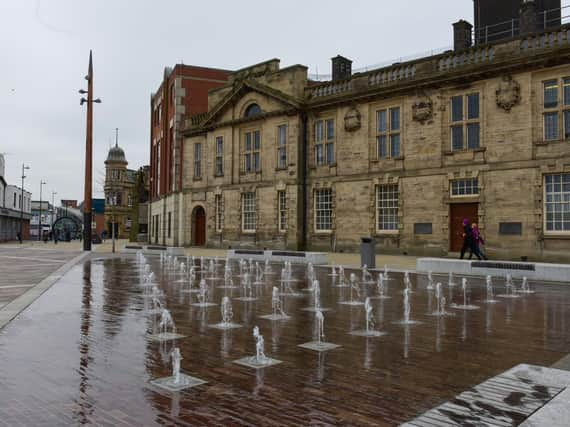Sunderland landmarks turn yellow for Cystic Fibrosis Trust


Landmarks across the North East will be lit up on Friday to show support for the Cystic Fibrosis Trust's annual Wear Yellow Day, taking place as part of CF awareness week.
South Shields Town Hall will also be illuminated.


Trust supporters in workplaces and schools across the region will also be taking part to get involved to help raise vital awareness of a condition which affects 10,400 people in the UK.
Advertisement
Hide AdAdvertisement
Hide AdGemma Williamson, Community Fundraiser for the North, said : ''It’s amazing to see the local people of South Tyneside, the whole of the North and throughout the country get behind such a wonderful cause.
"It is fantastic to see so many photos of fundraisers – and even their pets – dressed in yellow to support all those living with cystic fibrosis and here at the Cystic Fibrosis Trust we are very much looking forward to seeing what our 2018 Wear Yellow Day brings.”
Anyone can get involved and help raise awareness of cystic fibrosis, a life limiting condition which primarily affects the lungs and pancreas, by simply wearing something yellow on Friday , or taking a selfie with the #CFYELFIE hashtag on social media and donating £5 to the Cystic Fibrosis Trust by texting YELLOW to 70500.
Cystic fibrosis is an inherited disease caused by a faulty gene which controls the movement of salt and water in and out of your cells, so the lungs and digestive system become clogged with mucus, making it hard to breathe and digest food.
Advertisement
Hide AdAdvertisement
Hide AdIt is a life-shortening genetic condition – the median age of death is 29 years old, though half of people with cystic fibrosis alive today are expected to live into their forties, thanks to earlierdiagnosis and ongoing developments in care and treatments.
There are more than 10,500 people with cystic fibrosis living in the UK and the population is growing every year.
Two million people in the UK are carrying the faulty gene without realising it. If two carriers have children, there’s a one in four chance their child will have the condition, which slowly destroys the lungs and digestive system.
To find out more about Wear Yellow Day visit - https://www.cysticfibrosis.org.uk/get-involved/fundraising/join-our-fundraising-campaigns/wear-yellow-day?gclid=EAIaIQobChMI3ZqQgfLh2wIVr7ztCh2DnATSEAAYASAAEgL5y_D_BwE